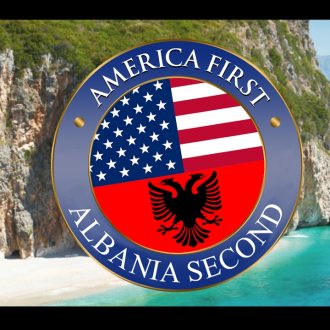ArtCop21 was created by the COAL Association (Coalition pour l’art et le développement durable, Coalition for Art and Sustainable development) and Cape Farewell, an international programme based at the University of Arts London.
First and foremost a global cultural movement, ArtCop21 is also an event taking place from November 30 to December 10 in Paris, at Gaîté Lyrique. The many events organized during these ten days combine culture, art and sustainable development to help attendees gain a new perspective on climate challenges.
The Summit of the Creatives gathers artists, scientists, professionals and thinkers to create stories and insights for a world to be reinvented. Place to B attended the grand opening on December 2.
The role of art in the ecological transition

David Buckland is an artist and the director of Cape Farewell, an international programme that aims to bring creatives and scientists together to stimulate a cultural narrative that engages and inspires a sustainable and vibrant future society.
Convinced that communication has a key role to play in solving climate challenges, David Buckland initiated the discussions by drawing a parallel between paradigm change and creativity. “A real transition movement is emerging today, and we need creative people to support it and democratize the subject“, he said. To make this change happen, all the voices of the civil society, artists and scientists alike, have to learn how to work together in order to carry the message beyond the converted. For David Buckland, the first challenge is cultural: he sees art as an instrument that will help raise awareness among a wider public.
The cultural voice in the climate debate
Several international artists attended the opening of the Summit, to share their personal experiences, but also to show the many artistic mobilizations that have emerged since the Rio Climate Conference.
Cynthia Rosenzweig, an American climatologist, recalled that it is scientists that brought the challenges of climate change to the wider public, helping to raise awareness of the need for transformation. This need, inherent in nature, today needs to be communicated beyond the scientific world. This is where art can help, by addressing scientific issues in a language that is both playful and understandable to the majority of citizens.
As Anne-Marie Melster (USA), co-founder and Head of ARTPORT_making waves (USA), pointed out, “it is important to have an artist inside COP21, to be an artistic observer, to talk about what’s going on there, to bring this idea over to the people, to the society“. Through the ARTPORT_making waves project (created in 2005), the artists are given the opportunity to work on climate change and exhibit their work to a wider public. During the Copenhagen conference in 2009, many art exhibitions were organized around the city, but none of them were around climate change, so it was impossible to find a space to organize an exhibition around climate change.
Frédéric Ferrer (FR) has also been working on climate change since 2005. His main subjects: the Anthropocene and the challenges this new era raises. He has also written Kyoto Forever 2, a play that simulates the debates happening behind the closed doors of the climate negotiation room. Originally a geographer, Frédéric Ferrer wanted to work on the concepts of intimacy and universality. “Climate change transforms our relationship to intimacy and the universal. Global warming is a universal fact that affects us deeply, because it questions our relationship to the Earth and to humankind.” Art has the power to move and engage people on an individual scale. In the end, the uniting of all of these individuals will nurture global change.
Art as a catalyst for change
Kevin Buckland (UK), artistic ambassador for 350.org, works on integrating artistic and creative communication into the youth actions for the climate. In the emerging social and ecological movement, he sees a real generator of connections. Paradigm change has also reached the activist sphere which is undergoing transformation, and artists have an important role to play in this. “Art can mobilize, but it also has the power to trigger action. It is important to settle places where people can engage, express themselves and act.”

For the poet Kathy Jetnil-Kijiner (Marshall Islands), art and poetry represent the power of free speech addressing things that have been forgotten in the negotiations and issues that have been silenced. Giving life to art is giving a democratic voice to the people so that they can express themselves beyond the political framework of the negotiations. But it also helps to touch the very heart of human beings, through their personal history, by closing the gap between the tangible and the intangible. To sum up, art helps bringing climate issues to life.
Through its power to trigger action and raise awareness, art helps to link climate issues to all forms of the beauty of life. As the German architect Anna Heringer added, beauty is the expression of love.
What if the simple act of loving were the first step towards ecological transition?
Lilia Ferhouh
Translation: Annelise Meyer / Review: Rachel Robertson


